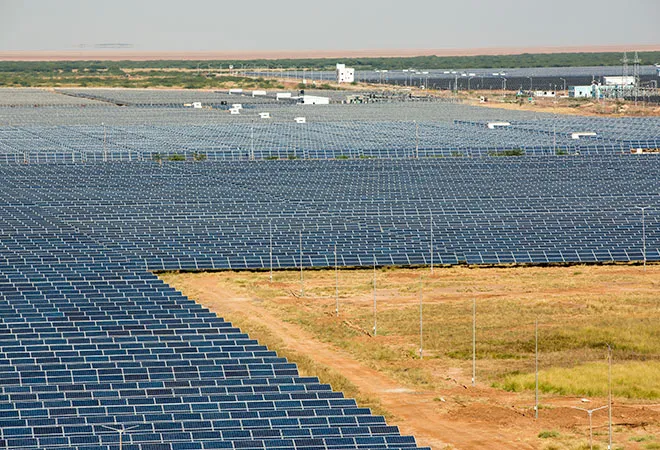The average human lives for 70 years though women outlive men. A child born over the next five years will still be alive in 2100 when the world tips over into the +2.5° heating trap triggering catastrophic forces of nature – sea level rise washing away entire islands and shore lines, floods from unseasonal rain, drought and desertification from the extreme heat.
None of this was necessary, if humans had lived responsibly instead of behaving like fruit flies with short lifes. If only we had all agreed to envelope our lives within metrics which measured real goods and services (health and happiness, as Bhutan does) rather than proxy measures of presumed well-being – wealth creation (GDP) and welfare (consumption) we might never have had to face todays trade-off between growth and welfare.
The good news is we can yet save ourselves from near extinction. Carbon emissions in 2020 are down by 8% to levels last seen a decade earlier. But the COVID driven drop is temporary. Making it permanent needs a global effort with the poorest bearing the brunt of the pain.
Developed economies have an easy ride having already built up a massive reservoir of assets based on the careless depletion of natural assets. Poorer economies, like India, South Asia and Africa have a rough ride. They are still building basic public assets like infrastructure. But making it green costs much more per unit of infra added.
The 1% of global GDP per year required to mitigate climate change is not going to come from the government budgets of the rich world. It will have to be self-generated though some of it could be met by the “international climate hedge” subtly crafted by concerned international actors – a perceptional three product construct.
First, a carefully induced, growing consumer preference for green products.
Second, behavior change to eliminate personal and institutional waste. This is easy for Indians and others in the developing world who still lick their plates clean after every meal and switch off the lights whilst leaving a room.
Third, a transformational, albeit nascent, change in the flow of international finance tagged for green technology and away from “dirty” fuels or “antediluvian” life styles like driving to work in carbon heavy private cars instead of walking, cycling, taking the metro or an Uber/Ola. International Green finance contracts have increased significantly since 2013 reaching around one fourth of the required $900 billion per year in 2018 (Bloomberg).
This is not to say that gaming the carbon reduction contest has ended. Fossil fuel will fight back – with cleaner tech, reduced emissions and lower prices versus green tech. But it is only a defensive battle of survival not for future market share.
India is on the right side of the energy divide having been dragged, kicking and screaming, by Prime Minister Modi into becoming an international champion for clean energy.
The India based International Solar Alliance aims to integrate economies in the solar belt across the globe into a seamless grid for the generation, transmission and consumption of electricity.
Ten years from now when you groggily switch on your kettle at 6AM in India, the energy could be coming from Jakarta or Bangkok where the sun would be shining brightly at 8.30 AM. In exchange India could supply electricity to late evening workers at 8 PM in South East Asia.
But the change goes well beyond energy supply and use. Over the period 2015-2018 global improvements in the technical energy efficiency of buildings were dwarfed by a 2.5 times greater surge in energy use, due to more and intensified use of appliances, larger floor space per person and population increase(IEA 2019).
India, a lower middle-income economy, has still to build two thirds of the required building stock for a target population of 1.6 billion. Adopting and implementing standardized energy intensity building codes can turn this seeming “financial burden” into an opportunity to fast-forward Indian construction to international competitiveness.
We are not far behind. Only 5% of the global buildings stock of 170 billion square meters is “near zero” and just 300 million square meters is net-zero (IEA).
It does not end there. By saying yes to organic, local farm products and a big no to fertilizer and pesticide intensive, farm products flown in from far away, all of us can contribute to the goal of net zero carbon emissions.
China recently announced that it would be net zero by 2060, within the lifetime of those less than 40 years of age. More than two thirds of India’s population is less than 40 years. They deserve a similar national commitment – targeting 2070 – a decade after China.
Today, we are two decades behind China in constant per capita GDP.
But the gap in annual growth rate is likely to narrow over the next half century. This makes the target reachable, especially if we follow in China’s footsteps- albeit whilst feeling the stones underneath, carefully.
Reaching net zero is more than a tech challenge. It requires massive behavioral change and a pulling together of efforts across the three tiers of government. We need a supply side “domestic climate hedge”– an instrument or entity which facilitates compatible albeit differential targets and contextual strategies but has the power and the capacity to guide decision making.
A National Change Management Commission could integrate the financial, economic, technology and social inputs to become net zero. Chaired by the Prime Minister, with select Union cabinet ministers, all Chief Ministers and Mayors of the 1 million plus cities (around 53) as plenary members, it’s task would be to define India’s Net Zero strategy (China has a target but no strategy) and to implement it, culminating in 2070 with its own demise, in a carbon-free, sun-set of achievement.
This commentary originally appeared in The Times of India.
The views expressed above belong to the author(s). ORF research and analyses now available on Telegram! Click here to access our curated content — blogs, longforms and interviews.




 PREV
PREV


